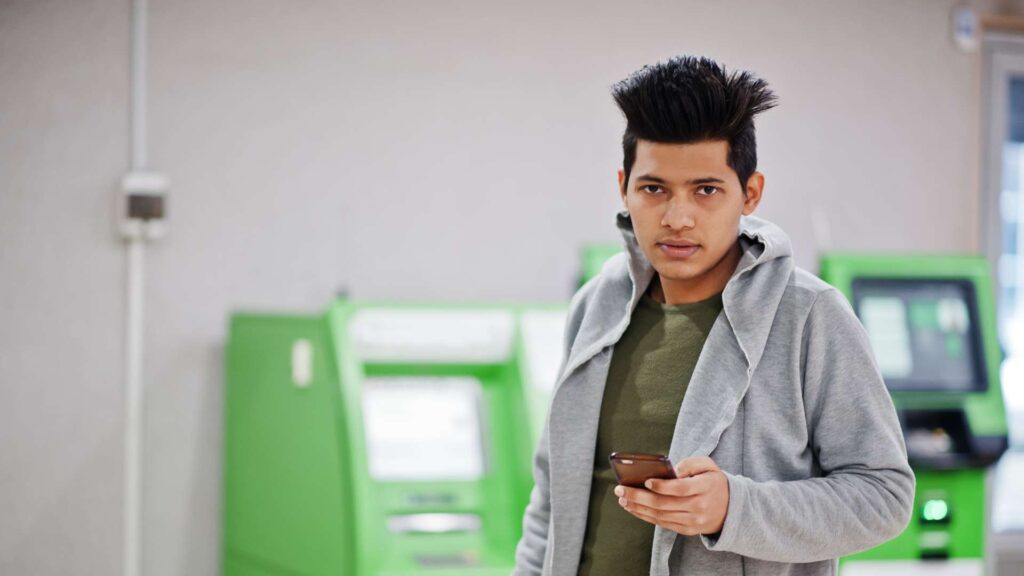Table of Contents
Back-to-school season often arrives faster than parents expect, and it can be more costly than the holidays when it comes to spending. Between new clothes, supplies, tech gadgets, and extracurricular fees, families can easily spend hundreds before the first bell rings.
But here’s the truth: you don’t need to overspend to set your child up for success. With smart timing, community swaps, and a “buy used first” mindset, you can stretch every dollar and still send your kids to school with everything they need.
This is your back-to-school savings guide, not about cutting corners, but about spending with strategy.
The Seasonal Spending Trap: Why August Feels Expensive
Every August, stores flood with “limited-time” sales, supply lists, and marketing designed to make you panic-buy. The urgency is evident, as families often shop reactively, rather than strategically.
Here’s why most people overspend:
- Poor timing: Shopping when everyone else does means fewer deals and fewer choices.
- Duplicate buys: You forget what’s still usable from last year.
- Impulse bundling: Discounts like “Buy 2, Get 1” tempt you to buy more than you need.
The fix? Plan before the rush. The earlier you organize and track your spending, the more control you have over both your wallet and your stress levels.
Read related blog: Using a HYSA for Childcare or School Expenses
Timing Is Everything: The Smart Shopper’s School Calendar
The biggest back-to-school savings don’t come from one big sale; they come from the right timing spread across the year.
Here’s a month-by-month guide to smart purchasing:
| Month | What to Buy | Why It Saves |
| April–May | Backpacks, lunch boxes | Off-season clearance before summer styles hit |
| June–July | School uniforms, basic supplies | Early bird pricing before demand spikes |
| Late August–September | Tech gear, calculators, and laptops | Post-rush markdowns after back-to-school week |
| October–December | Sportswear, shoes | End-of-season athletic discounts |
| January | Leftover school supplies | Deep clearance post-holiday |
Swap Before You Shop: The Community Savings Secret
Not everything needs to be bought new. Many of the best savings can be achieved by swapping with neighbors, classmates, or community groups.
Here’s how to make swapping smart, not awkward:
- Host a Local Swap Night: Invite parents to bring gently used clothes, backpacks, or supplies. Label items by size or grade.
- Join online parent groups, such as Facebook, Nextdoor, and school WhatsApp groups, which often host “Back-to-School Swap” threads.
- Ask About School Swaps: Many schools organize uniform exchanges or secondhand book drives.
Why it works: kids outgrow or move on from items fast. A “new-to-you” backpack or jacket can save $50–$100 instantly, and reduce waste in the process.
Read related blog: How To Pay For Grad School Without Loans
Buy Used First: The Hidden Goldmine of Gently Used
Buying used doesn’t mean settling. In fact, many secondhand finds are brand-name, barely used, and half the retail cost.
Where to look:
- Thrift Stores: Check early mornings mid-week for the best inventory.
- Online marketplaces, such as Facebook Marketplace, eBay, and Poshmark, often feature bulk listings of school supplies or lightly used electronics.
- Local Consignment Sales: Seasonal children’s consignment events offer high-quality clothing at 60–80% off retail.
For tech gear, look for certified refurbished options from Apple, Best Buy, or Dell — these come with warranties and cost 25–40% less than new.
Pro Tip: Search “open box” listings for headphones, calculators, and tablets. You receive a new product, minus the packaging markup.
Shop Your Home First: The “Use What You Own” Challenge
Before heading to the store, take a moment to take inventory. You probably have leftover supplies, unused notebooks, and forgotten markers hiding in drawers or backpacks.
Create a mini “supply station” at home and gather all the items you already have on hand. Then cross off what’s still usable before making your list. You’ll often find you need only 30–40% of what you planned to buy.
Uniforms, Shoes, and Style on a Budget
Clothing is where back-to-school budgets balloon fast. Here’s how to rein it in:
- Buy Basics in Multiples: Stick to neutral colors and durable materials. These can be mixed and matched across seasons.
- Shop Out-of-Season: Buy winterwear in March and summer clothes in September.
- Choose Quality over Quantity: One good pair of shoes beats three fast-fashion pairs that fall apart mid-semester.
- Set a Clothing Allowance: Give older kids a fixed budget and let them make their own choices; it teaches them responsibility and helps prevent overbuying.
Beem Tip: Track these purchases through Beem’s BFF Budget Planner. You’ll see patterns over time and plan next year’s spending better.
Tech Time: How to Save on Gadgets Without Compromise
Tech is becoming a bigger chunk of school expenses, but smart timing and flexibility can help:
- Buy during Back-to-School or Labor Day sales, not before.
- Compare education discounts: Apple, Lenovo, and Microsoft all offer student pricing.
- Refurbished vs. New: Certified Refurbished Units Save Hundreds.
- Skip the extras: Styluses, covers, or headphones can often be found used or generic.
If your school allows, Chromebooks and tablets are often more affordable alternatives to laptops for most students’ needs.
Meal Prep and Lunchbox Math
Back-to-school savings don’t stop at the checkout line. Daily lunches can add up quickly, costing $4 to $8 per meal per child.
Save with these simple swaps:
- Buy reusable containers and bottles once. Skip single-use plastics.
- Prepare snacks in bulk (such as nuts, fruits, and sandwiches) at home instead of purchasing prepackaged ones.
- Cook double dinners and repurpose leftovers for lunch.
- Use Beem cashback rewards from grocery runs to offset weekly meal costs.
Small habits, big results. You’ll easily save $60–$100 a month per child.
Beyond Supplies: Subscription and Activity Audit
Don’t forget the hidden costs, like after-school activities, clubs, or digital learning tools. Many families autopay for apps and subscriptions year-round without realizing it.
Audit every few months:
- Cancel any old education apps that are no longer in use.
- Switch to family plans or student discounts.
- Negotiate activity fees. Some community centers offer sliding-scale pricing or sibling discounts.
The Environmental Win: Why Buying Less Helps Everyone
Saving money by swapping and buying used items also reduces environmental waste. Every reused backpack, lunchbox, or pair of shoes prevents new materials from entering production.
Talk to your kids about this. It turns financial mindfulness into a lesson in sustainability and gratitude. They learn early that saving is not just about cost; it’s about conscious living.
The Beem Advantage: Plan and Track Effortlessly
The Beem app makes back-to-school budgeting simple. You can:
- Tag and track spending by category (supplies, tech, clothing, meals).
- Use Everdraft™ Instant Cash for unexpected school expenses, interest-free.
You’ll move from reactive spending to proactive planning and enjoy a stress-free start to every school year.
The “One-List Rule”: How to Simplify and Stick to It
One of the easiest ways to overspend during back-to-school shopping is juggling too many lists: one from the school, one from your child, and one from your imagination. Combine them into a single master list that balances need with want.
Go through your school’s checklist, cross-check with what’s already at home, and then let your child add one or two personal “fun” items; maybe a character notebook or lunchbox sticker pack. This way, you respect their excitement while keeping the purchase grounded.
Once finalized, stick to the list as if it were a receipt. Each extra “oh just one more” item can silently add 20–30% to your cart. Simplify, commit, and save.
Why “Secondhand” is the New Smart
Hand-me-downs aren’t a compromise anymore; they’re a quiet revolution. With sustainability now part of mainstream parenting, passing along quality items has become a badge of resourcefulness, not frugality.
If you have multiple children, consider organizing an annual “hand-me-down day” at home. Let younger siblings “shop” from what the older ones outgrew. You can even make it fun by sorting items by size, decorating bins, or adding small “thank you” tags for the sibling who passed it on.
And if you’re part of a local community, create a rotating system where parents exchange uniforms, jackets, and sports gear at the end of each school year. It’s eco-friendly, budget-friendly, and community-building all at once.
Teach Kids the “Budget Buddy” Habit
One of the most powerful things you can do during back-to-school season isn’t just to save. It’s to teach. Encourage your kids to get involved in budgeting from an early age. Please give them a mini spending limit (say $30) and let them choose some of their own supplies or accessories. They’ll start learning the trade-offs between wants and needs, sales and quality.
When they help track spending on your Beem app, it becomes a family activity, not just a financial task. You’re not just preparing for school; you’re raising mindful, money-wise kids who see budgeting as a means of empowerment, not restriction.
Read related blog: How to Pay for Private School
Big Savings for Bigger Families
Buying in bulk is a great idea until you realize you don’t need 60 glue sticks or 20 reams of paper. The fix? Partner with other parents.
Team up with two or three families to split bulk orders of supplies, uniforms, or snacks from wholesalers like Costco or Amazon. You’ll all pay less per item and reduce waste.
Use a shared spreadsheet or even a Beem’s Budget Planner to track who paid what. It keeps things transparent and eliminates awkward reimbursements later. With a little coordination, group buying can easily save each household $100 to $200 per month.
End-of-Year Prep for Next Year’s Savings
Back-to-school planning doesn’t end in September; it begins again in May. Create a “reset ritual” at the end of each school year: clean out backpacks, sort through art supplies, check what clothes still fit, and box up reusable items.
Label and store them clearly so you know exactly what’s ready when the next school year rolls around. You’ll start the new year ahead of the curve with half the supplies already in stock and none of the panic buying that drains your wallet every August.
Over time, this habit becomes one of the most powerful (and peaceful) savings strategies in your family’s routine.
Read related blog: How Do School Bus Drivers Get Paid in the Summer?
FAQs on Back-to-School Savings: Timing, Swaps, and How to Buy Used
When is the best time to shop for back-to-school deals?
Late July to early September is ideal, but significant savings can be achieved by planning year-round. Off-season sales often beat the hype weeks.
Is buying used school gear safe or reliable?
Yes, especially for non-tech items. For electronics, opt for certified refurbished items or purchase from trusted local sellers with established reviews. Always test or inspect used items immediately after purchase so you can return or exchange them before the school rush kicks in.
How can I stop overspending during back-to-school sales?
Set a firm budget in Beem, make a list from last year’s leftovers, and stick to it. Sales aren’t savings if you buy what you don’t need. Challenge yourself to a “No Extra Spend” day during the peak sale week. It trains you to pause and prioritize essentials over excitement.
What if my school has specific brand requirements?
Check early with the school. Often, generic alternatives meet the same specs. Don’t wait until the last minute when prices surge. If you’re unsure, ask your school’s parent group, as seasoned parents often know about affordable substitutes that still meet the guidelines perfectly.
Can Beem really help me save for school expenses?
Absolutely. Beem lets you track expenses and visualize how much you’re saving by turning financial planning into peace of mind. Over time, you’ll actually see patterns emerge, from how much uniforms cost yearly to which months you overspend, helping you refine your budget with precision next season.
From Panic Buys to Planned Peace
Back-to-school shopping doesn’t have to mean chaos or credit card strain. With timing, swaps, and smart reuse, you’re not just saving money; you’re building systems that make every school year easier than the last.
And with smart personal finance tools like the Beem app, you don’t have to juggle spreadsheets or guess where your money went. You can plan early, spend intentionally, and still enjoy the excitement of fresh notebooks and new beginnings, without the financial hangover. Download the app now!















































